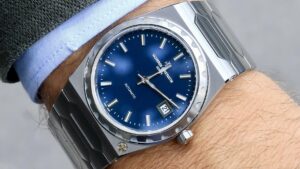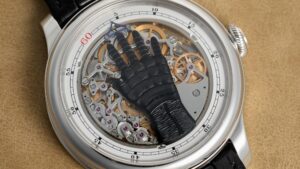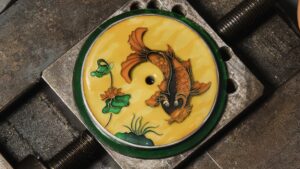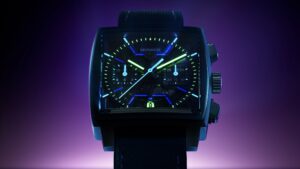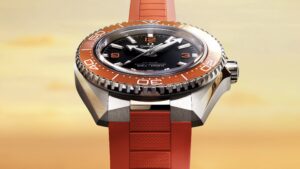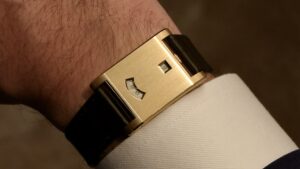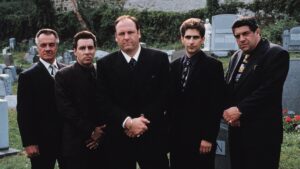The hours before my 3:30 am alarm went off weren’t what you’d call sleep. More a succession of naps, punctuated by checking the time on the IWC Pilot’s Chronograph I had set up as a bedside clock, because we had a good reason to get up early – it was the Airspeeder flight day.
John and I were in Adelaide with IWC to visit the factory and testing location of Airspeeder and its sibling company, Alauda Aeronautics, which together are working hard to create the first piloted flying car racing series in the world. It’s a bold ambition, but one that makes perfect sense when you consider the possible applications for such technology outside of the racing context.
“There are forecasts the market for flying vehicles will be worth more than $1.5 trillion,” explained Matt Pearson, CEO and founder of Airspeeder. “Competition is the best way to drive progress and innovation, which is exactly why we’re creating a racing series.”
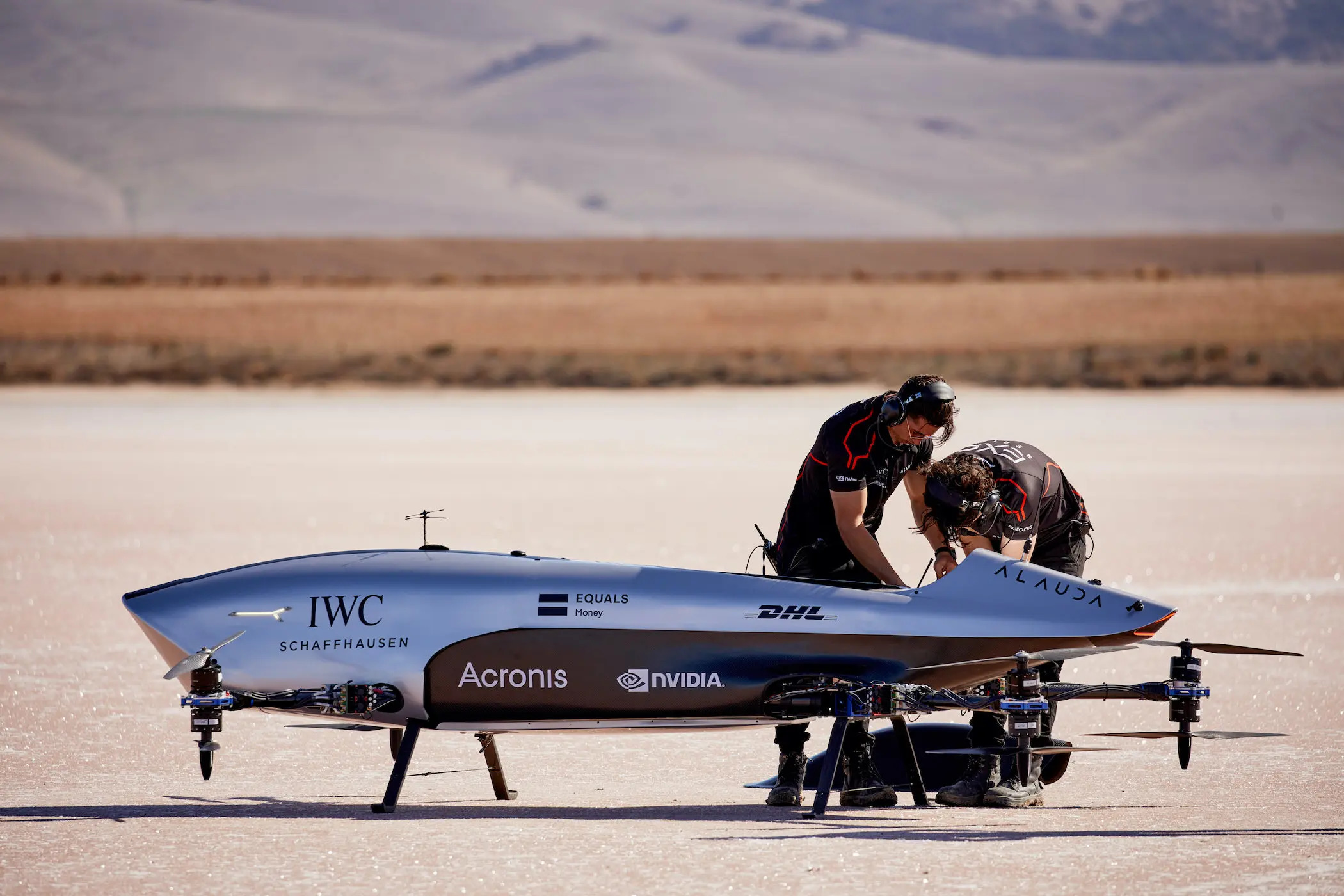
In order to chase this dream, Matt established both Airspeeder and Alauda Aeronautics (as well as a separate satellite company called Fleet Space Technologies), with the former set up to run the competitive side of things, while the latter actually builds the flying vehicles. Any project with such an ambitious magnitude needs the very best people to make it happen, which has seen Matt hiring for his companies directly from the FIA and Formula 1, as well as staff with military, high-performance automotive and aerospace engineering backgrounds.
At the moment, the cutting-edge Alauda Aeronautics vehicle is the Mk3 Airspeeder, which as the name gives away, is the third generation of electric vertical take-off and landing vehicles (eVTOL) that have come out of more than 250 real-world test flights. Weighing in at around 150kgs and standing nearly 4m in length, the current Mk3 is a remote-controlled octocopter eVTOL, which has a better thrust-to-weight ratio than an F-15 fighter jet. Impressive stuff, to say the least.
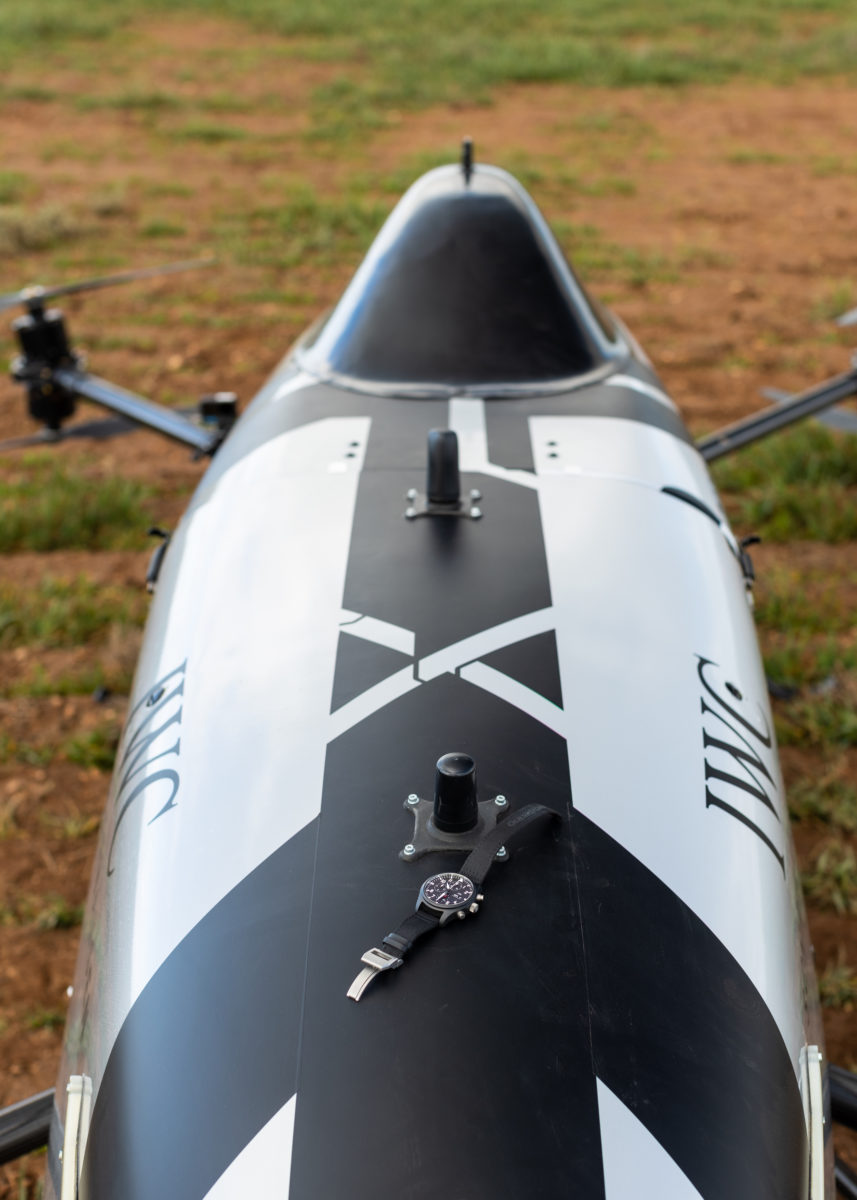
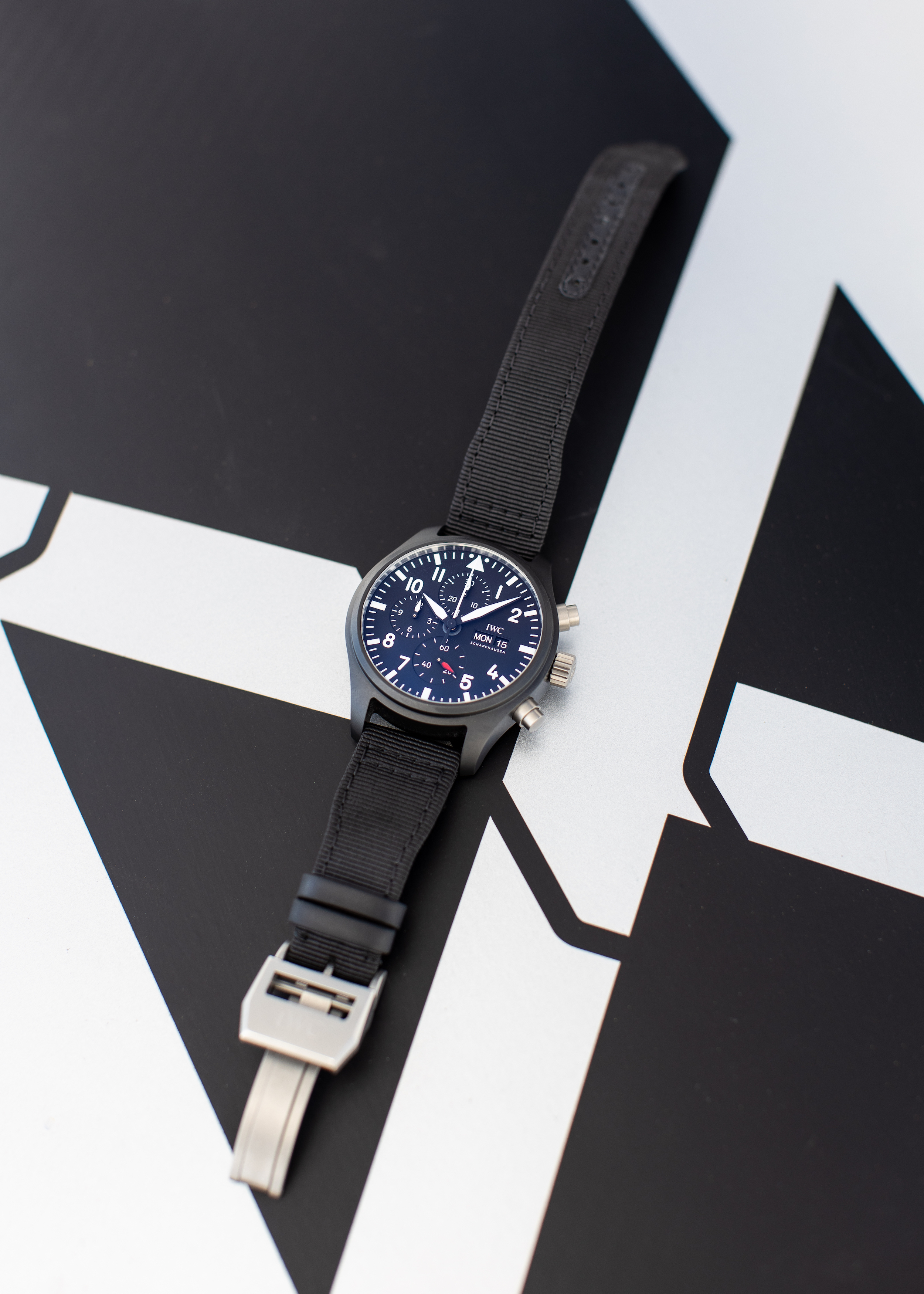
While the Airspeeder vehicles are currently unmanned and are flown remotely via a specially designed Telstra Purple 5G network, the intention is to put pilots into the craft as early as 2023. As you can imagine, there are rigorous safety systems and protocols that are being designed and tested to keep the pilots protected in the event of a crash, with the team currently designing a crash-proof cockpit based on a Formula Renault carbon-fibre monocoque chassis.
While it’s a significant challenge to create what is effectively a flying F1 car, the logistics of race day have their own set of complex problems to solve. While a racing circuit on the ground has clear and obvious track limits, built-in timing and tracking infrastructure, pit lanes for repairs and refuelling, spectator locations and more, all of these elements need to be built from scratch for the Airspeeder competition.
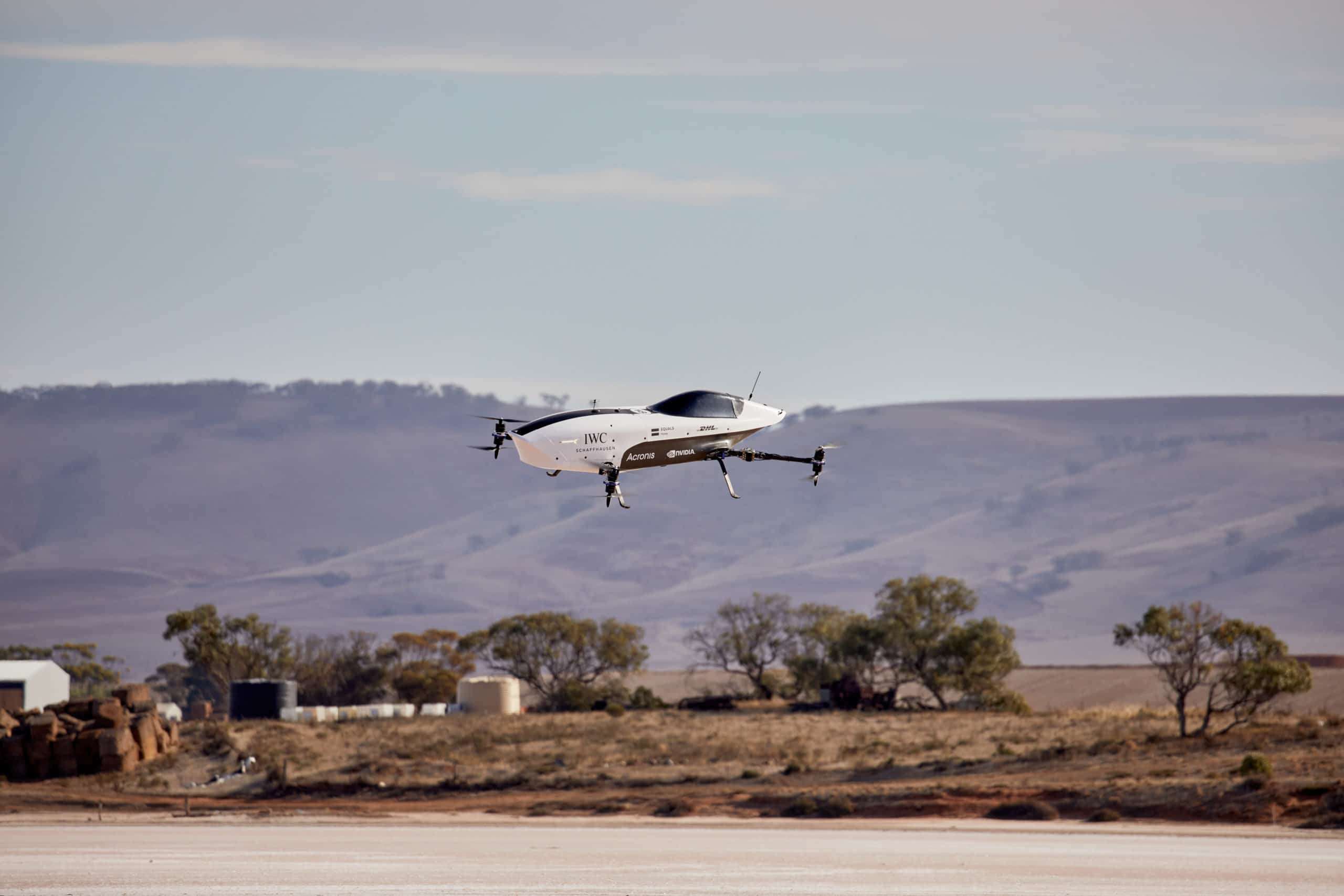
Even more basic challenges include being able to tell at a glance who is winning a race, which is straightforward on the ground as you can easily observe how fast the cars are moving relative to points on the track, and the two-dimensional plane on which they are travelling. If you look at two birds flying near each other from a distance, it’s much more difficult to tell which one is in front of the other, let alone which bird is moving through the air more quickly without a comparative point of reference, which is something Airspeeder is exploring how to solve.
One possible solution is to have a three-dimensional race track that is visible via an augmented reality projection, allowing spectators to see the track in real-time via an app on their phones, and online coverage to have the track superimposed onto the landscape, while the pilots use a heads up display built into their helmets. A gated solution similar to the one used by the Red Bull Air Race World Championships was considered, but wasn’t suitable as the Airspeeders will be racing propeller to propeller, rather than in a time trial format.

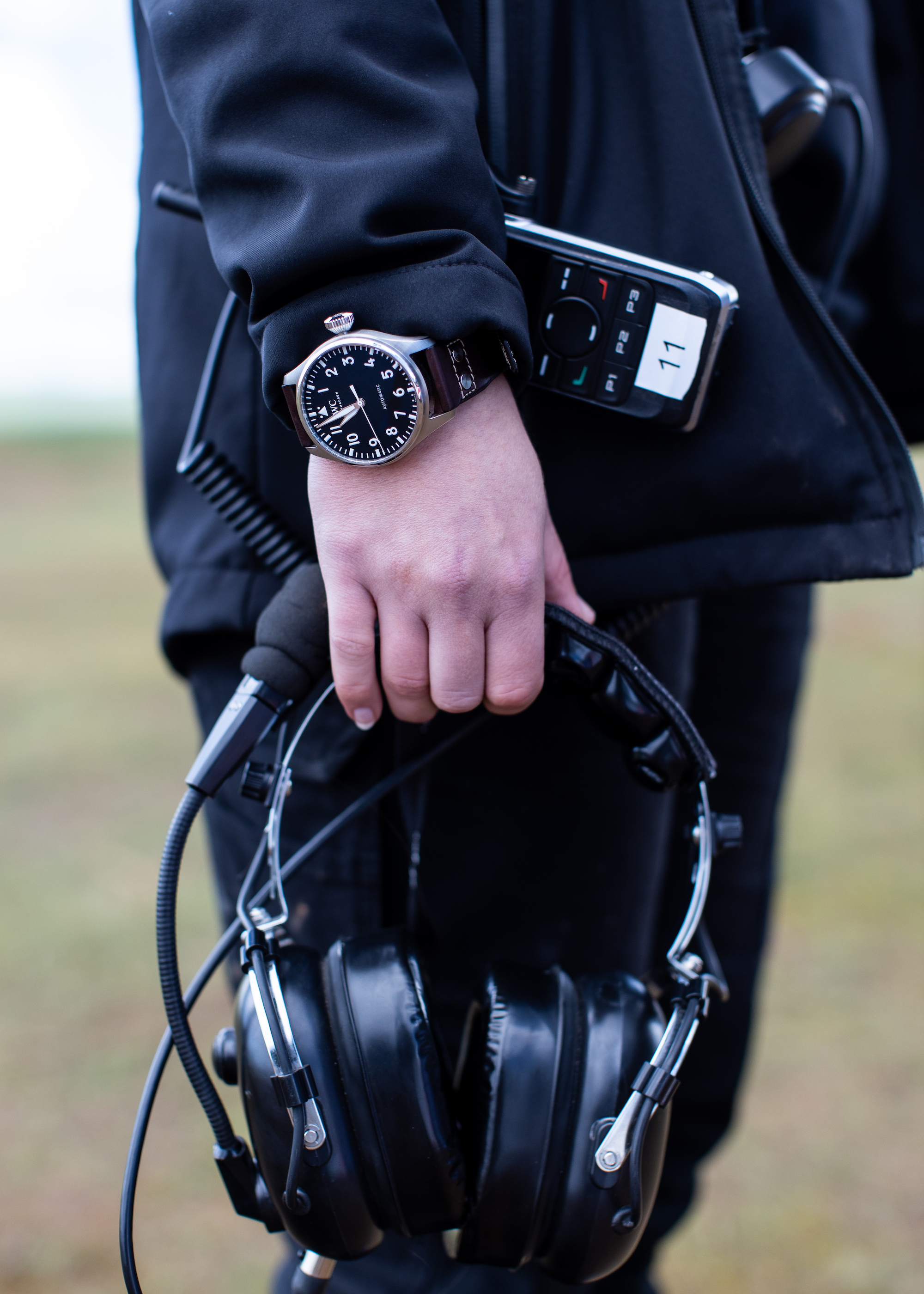
These trailblazing problems and solutions are exactly why IWC has partnered with Airspeeder in this pursuit of flying race vehicles. As a watchmaker with the best part of a century of experience making timepieces for the world’s best pilots, it only makes sense to see IWC watches on the wrists of tomorrow’s pilots too.
With IWC’s current range of Top Gun watches, you might have spotted them on wrists in Tom Cruise’s latest blockbuster, but they’re also worn by actual navy fighter pilots in the United States Navy Strike Fighter Tactics Instructor program. A little closer to home, IWC recently did a limited run of watches for members of our own RAAF, which were only available to past or current serving members.
While it makes sense for Airspeeder to recruit engineers and operational staff from the automotive and aerospace industries, the pilots are another question altogether, as nothing quite like this has ever been done before. Beyond a necessarily ruthless competitive streak, the pilots also need to work in lockstep with the engineers to develop the Airspeeder vehicles into the most exciting form of motorsport ever created.
For this, Airspeeder recruited variously from professional FPV drone racing (Zephatali Walsh, Lexie Janson and Fabio Tischler) and even Formula E and eSports racing (Bruno Senna, nephew of the motorsports royalty Ayrton Senna). Combined, the current crop of Airspeeder pilots forms the leading edge of motorsport and its future.
On the morning of the flight testing day, we were on the road well before dawn, driving two hours out of Adelaide to the Airspeeder piloting location. Airspeeder has two locations it tests its vehicles; one at the famous South Australian salt flats that have served for decades as the site for rocket tests and land speed world record attempts, and the other on a non-descript farm with nothing but clear skies as far as the eye can see.
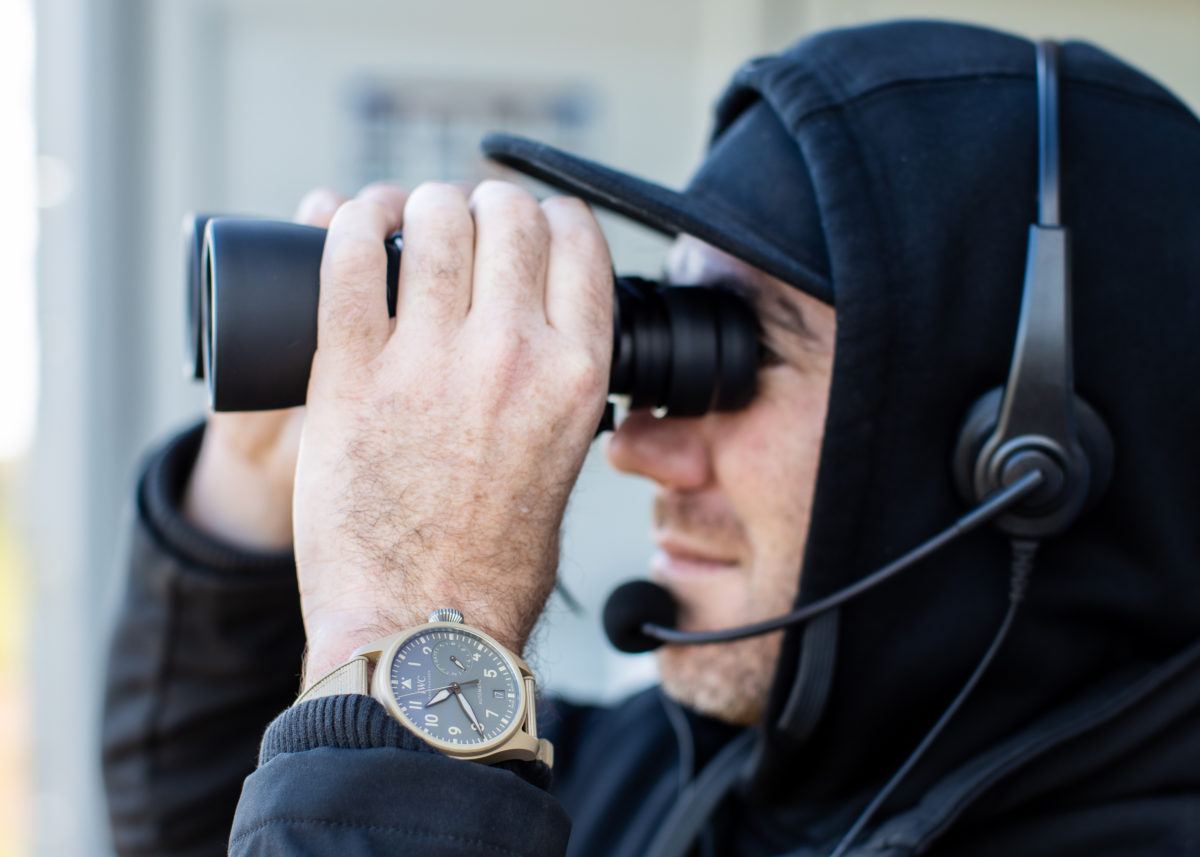
As we arrived, the launch site was already a hive of activity, with more than a dozen Airspeeder engineers, race directors, pilots and operational staff setting everything up with military speed and precision. Immediately, our attention was grabbed by three trucks parked in a line, inside each of which was a kayak-sized Airspeeder Mk3 ready to take to the skies.
Anticipation at the launch site only increased as the setup was completed. Matt’s two border collie dogs had been furiously exploring the grassy paddock all morning, but as they sensed something was about to happen, they returned to their owner for takeoff. A safety briefing and formalities were out of the way and we were ready to go.
It’s hard to describe exactly how impressive the Airspeeders were in person as they left the ground, with propellers whirring until the signal was given and they leapt into the air with the intent of a big cat in the African savanna. Once airborne, they seemed to glide almost effortlessly, slicing through the air a few dozen meters above the ground at their testing speed of close to 150kph, before landing with equally cat-like grace.
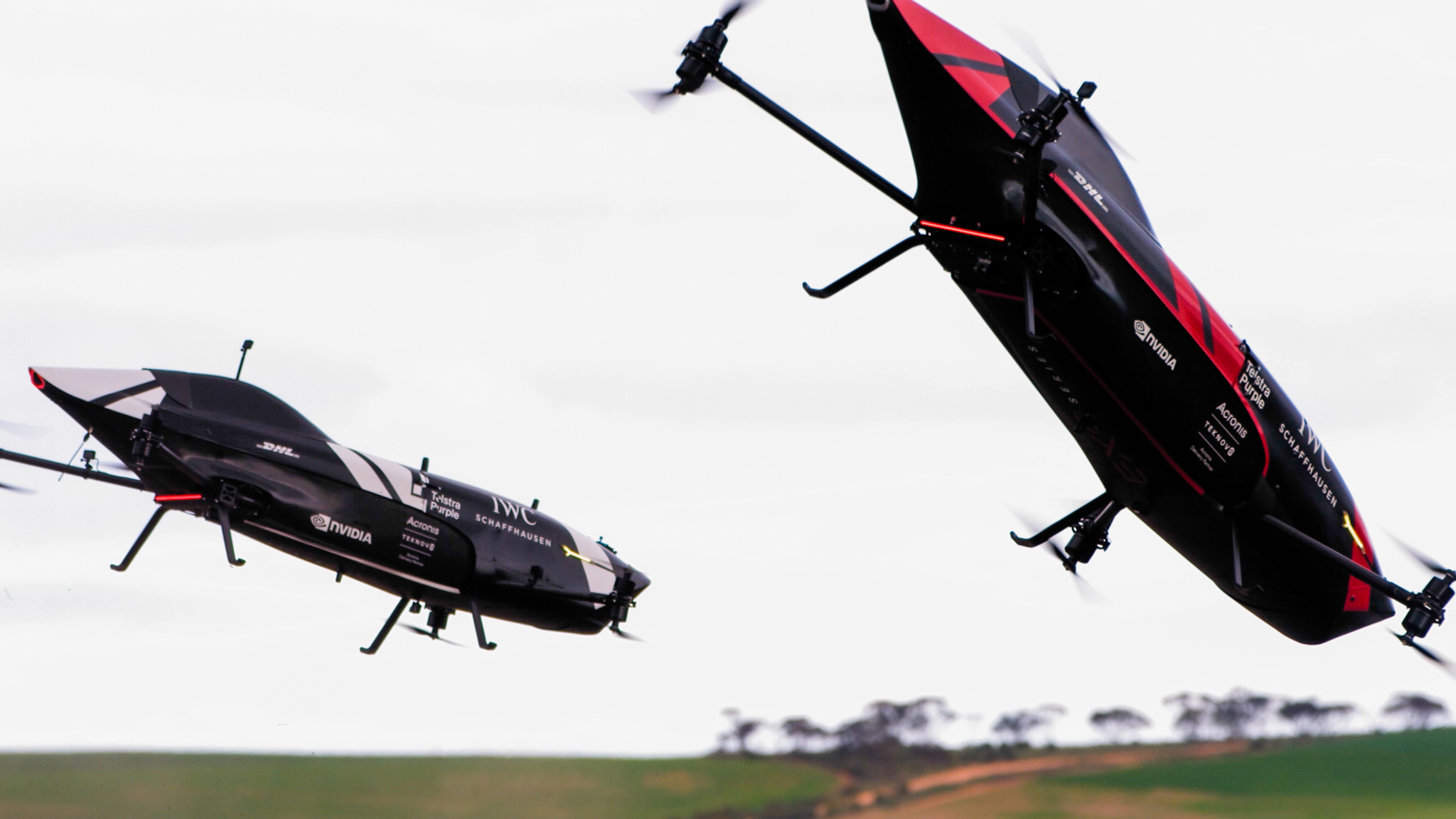
At the moment, the Mk3 batteries have enough juice for between 10 to 15 minutes of flight time, meaning swift pitstops will be a critical part of the strategy once the competition series heats up. Once fresh batteries had been installed and the warmup was complete, Airspeeder pilots Lexie and Zeph were ready to show us what they could do under racing conditions, around an AR circuit in the sky that was under the command of an ex-FIA racing director.
Both pilots got a clean start, but Zeph had an edge over the ultra-competitive Lexie as they passed through the first gates. As they accelerated around the track, it was clear that Lexie was coming back strong, and as they neared the finish it was almost too close to call.
Zeph took the quickest lap time by a whisker in what was a genuinely exciting competition, and one that gave a tantalising taste of what to expect when the Airspeeders have pilots inside them. Once both Airspeeders had landed, it was time for a toast before saddling back up for the drive back to Adelaide.

After the adrenaline of the racing had subsided, the feeling in the car was replaced by one of excited awe, with a sense that we had been offered a glimpse into a possible future where vehicles were no longer earthbound and cars could really fly. A sort of The Jetsons-inspired step towards the stars where travel was faster and more convenient, growing into an interplanetary network that could trace its roots back to the early 2020s in a farm in Adelaide.
That future is still decades away at the moment, but the progress that Airspeeder has already made is very real and is measured in months, not years. With 2023 plans for an onboard piloted racing series held at multiple locations around the world, the prospect of flying cars for you and me seemed a nearer possibility than ever before.
This article is sponsored by IWC Schaffhausen. Thank you for supporting the brands that support Boss Hunting.



